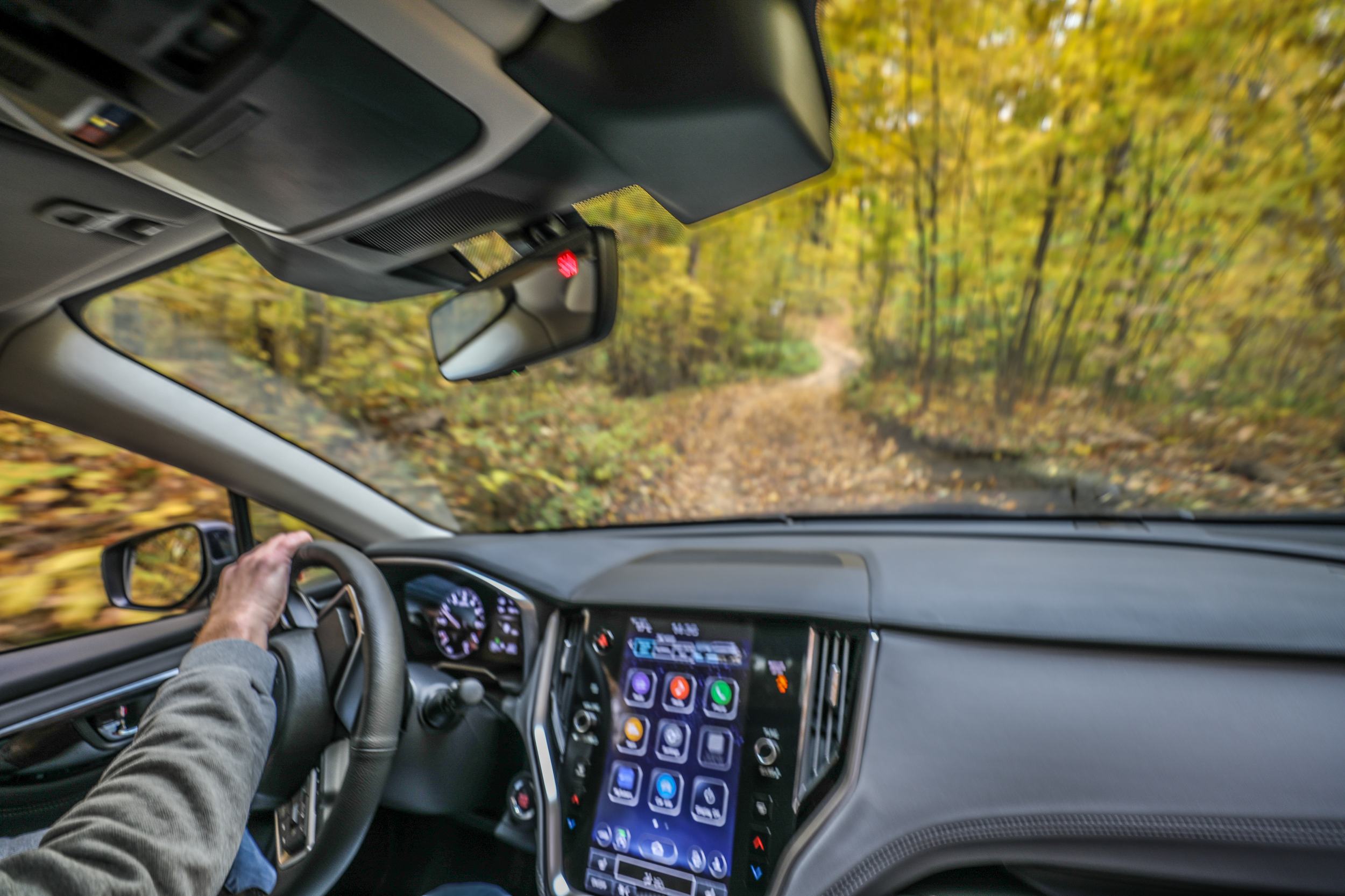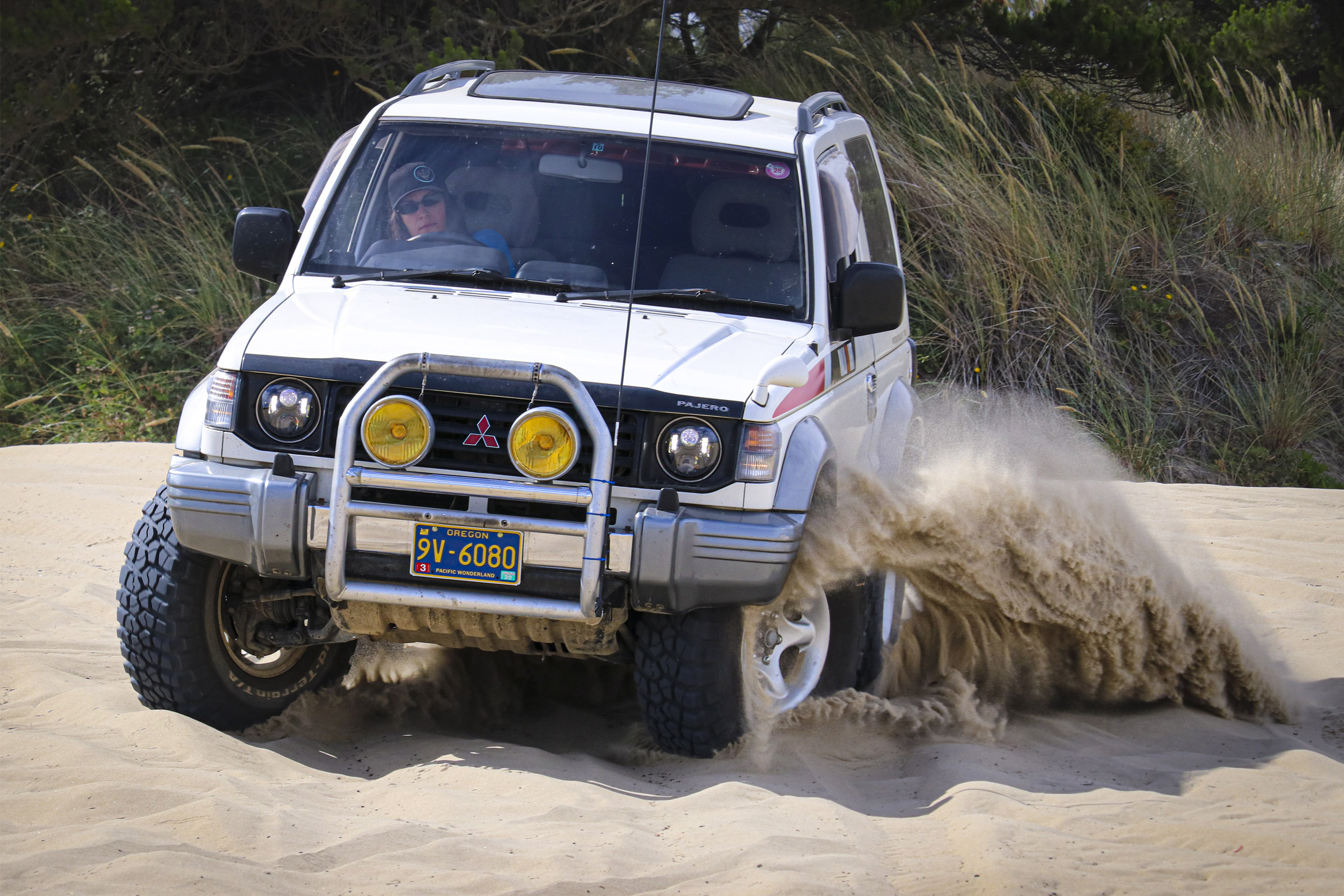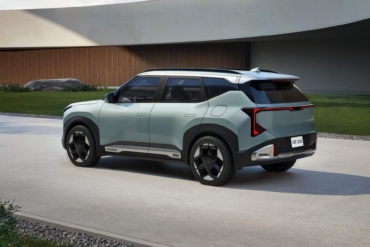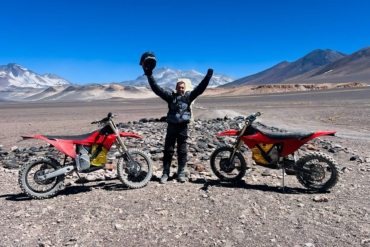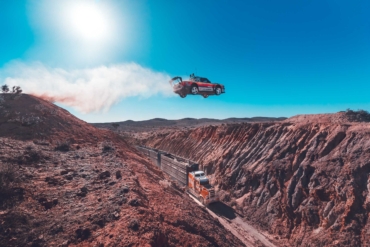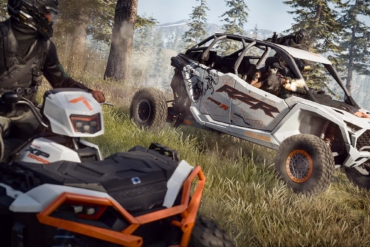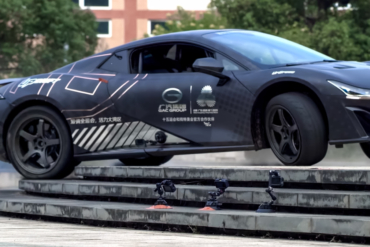Even the best computers and transfer cases can’t help you if you have the wrong tires. Especially if you do something stupid. Rule number one for these fall driving tips: respect the limits of your ride.
Twice in just a few hours, I found myself on the end of a tow rope. Neither time was on anything approaching rugged terrain. It was a stark lesson in the importance of proper tires and of using your head, not your heart, when driving in rapidly changing fall conditions. Four wheels and all the electronics in the world can’t make up for physics or bad decisions.
The first mishap was behind the wheel of a Subaru Outback. I was near Bowmanville, Ontario, for the Automobile Journalists Association of Canada’s annual TestFest event. Here, I had the opportunity to exercise dozens of new cars, trucks, and SUVs on paved and unpaved roads.
Fall Driving Tips: All-Wheel Drive Can’t Change Physics

A trail hiding in the sprawling infield of Canadian Tire Motorsports park is an ideal place to test out crossovers and smaller SUVs and get a feel for their off-road capabilities. It’s a two-track that runs through a small clump of forest and is a near-perfect simulation of a cottage path.
The “driveway” that runs from the main road to your cabin, for example. Or the kind of trail that will take you to some of the most interesting hiking — or mountain biking — spots or a great backcountry campsite.
It’s not meant to be a serious challenge, just a light workout to show the tech, traction, and articulation of a typical crossover.
But there I was, frozen in place on a small hill. Unable to move forward, unable to roll backward. The only direction I could go was sideways, sliding with each touch of the throttle.
That’s despite Subaru’s excellent Symmetrical all-wheel drive doing its best to turn all four tires. And with the X-Mode throttle and AWD management doing whatever sorcery it does.
I, along with many other drivers and vehicles, had driven the same trail the day before without a problem. So, what happened?
Life — And the Weather — Comes at You Fast

Several inches of rain had fallen in the early morning. The fallen leaves and dirt were transformed on the trail into something resembling a Slip ‘N Slide. The mud wasn’t deep — my Outback wouldn’t even dig in enough to make a hole — but the ground was impressively slick.
My off-road rescuers were driving a Ford Bronco and a Jeep Gladiator with the winch that would help drag me out. They were able to make it down the trail to get to me. So was the Jeep Renegade driven by the mid-course spotter.
It wasn’t a walk in the park for any of those vehicles, but we all had four driven wheels. So what was the difference?

The difference was tires. I was driving an Onyx trim Outback equipped with Avid Ascend GT tires. There’s nothing wrong with those tires for most situations.
They do exactly what Subaru wants, delivering confident on-pavement traction in the dry or wet. They can handle colder temperatures, and deliver a quiet ride, long tread life, and reasonable fuel economy.
The tires are up to some light off-roading, like this cottage trail on Wednesday afternoon. On Thursday morning, with so much rain, they might as well be leather-soled shoes. In the words of Bob, who hooked up the winch and then walked alongside and guided me half a mile in reverse to get back out: “It’s slick as s**t.”
Good Tires, but Not Great Tires

Tires are a compromise. They can be OK at many things, good at a few things, and excellent at just one or two things.
Winter tires are excellent on snow and ice, bad in the mud, and miserable on hot pavement. Mud-terrain tires are great in the mud, not great in the snow, and will deafen you on the highway. They’ll also drain your bank account.
What would have saved my pride and my sneakers here? The Outback Wilderness, for a start.
Trim levels and packages pitched at drivers going off-road might come with black painted trim, rubber floor mats, and other cosmetic trinkets. But they usually come with one feature that actually helps make them more capable and could have — maybe — gotten me the rest of the way around the cottage road loop: all-terrain tires.
All-terrain tires give up some highway noise and cornering grip in favor of working better in slippery off-road conditions. Like a light layer of mud and slime with wet leaves on top.
They wouldn’t have helped if the mud was inches deep. For that, you need a dedicated mud tire and some luck. Or you need the thing that would have saved me from my second misadventure that ended up with a tow rope and some extremely awkward phone calls.
Wet Feet Mean a Bad Day

That second thing is good judgment. Maybe it should be the first thing in this story, but at least this way you’ll have a better chance when you make a mistake like mine.
I was on a gravel road I’d been down many times before. Not a well-maintained road, but nothing that should have been an issue for the Infiniti QX60 I was driving at this point in the day. The problem: I hadn’t been down the road that day.
I thought they were small puddles. I was sure I could see firm ground lurking just beneath the surface. Instead, that fall rain had made a pool. It was about 18 inches deep when I came to a stop, nose down, with four tires unable to find traction.
Another panicked phone call and 12 minutes of waiting that felt like hours, I watched as muddy water began to pool at my heels. On a related note, I’d like to point out that Infiniti makes some top-quality door seals.
Finally one of the event crew members arrived with an F-150 and a tow rope. This made for a quick, easy tug out of the mud.
I’m told the only damage was to my pride, and that the crossover cleaned up just fine. But it could have been much worse.
My lapse in judgment wasn’t matched by my luck running out. On the other hand, it’s a situation I shouldn’t have run into in the first place.
Check Yourself Before You Wreck Yourself

I knew it had rained very hard, even if it had stopped hours before. So I should have known that there was a lot of water on the ground. This means that instead of charging into a puddle I should have checked it out first. Because hood-deep puddles are bad for your health.
If you won’t walk through it, you probably shouldn’t drive through it. That’s the advice I’ve been given and it holds true here. I would never have tried to walk through that puddle, especially by myself.
Going by myself was another mistake, compounding my errors. If I’d had another vehicle with me, maybe the other driver would have told me it was a bad idea. They would definitely have been able to drag me out more quickly, which would have been almost as helpful.
Fall Driving Tips: Know Your Vehicle

In just a single day, some key driving lessons were driven home. Looking foolish does a great job of reinforcing learning experiences.
Know your vehicle. That doesn’t mean having an SUV that can handle anything; it means knowing its limitations and not crossing them.
Wear the right footwear. That goes for you and your ride. My tires didn’t handle the mud and neither did my sneakers. Wet feet and a faceful of mud were waiting for me as soon as I opened the door.
Know the terrain, it can change quickly. This is especially true in the fall, with leaves and rain. What was fine yesterday could be slick with mud or even ice today. That applies to the pavement, not just the dirt. Check out that water hole before you go charging in!
And don’t go alone. If you’re planning on doing much more than driving down a gravel road, bring a friend. Preferably a friend with a recovery strap (in another vehicle) to help you get unstuck.
Now get out there and have some fun while the temperatures are cool and the foliage is stunning.
And don’t get stuck, unless you want to.
